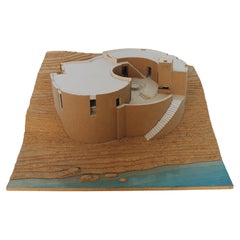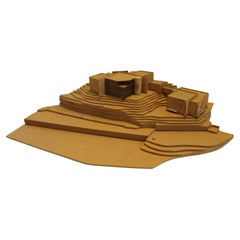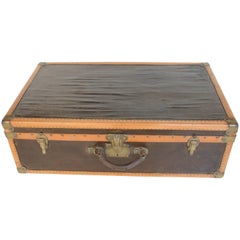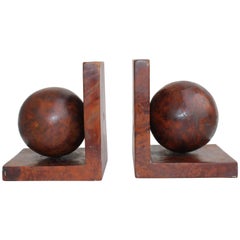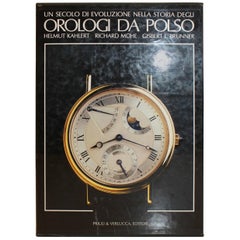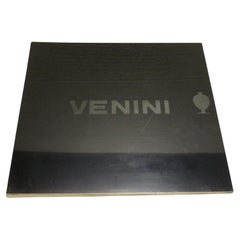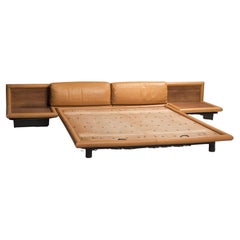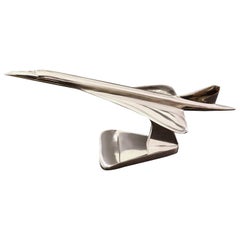Futuro Anteriore More Furniture and Collectibles
to
2
7
7
3
3
7
1
2
4
1
1
1
2
5
3
2
1
1
7
6
1
7
7
7
1
1
1
1
1
Cini Boeri Model 'Maquette of "Casa Alla Maddalena" Sassari, Italy, 1966/67
Located in Sacile, PN
Model of Cini Boeri, Casa alla Maddalena, Punta Cannone, La Maddalena, Sassari, 1966-1967
This house is perfectly adapted to the steep slope of the lan...
Category
Mid-20th Century Italian Mid-Century Modern Models and Miniatures
Materials
Cork, Paper
Afra and Tobia Scarpa Model 'Maquette' of Aobadai House, Tokyo 'Japan' 1995
By Afra & Tobia Scarpa
Located in Sacile, PN
Afra and Tobia Scarpa paperboard model (maquette) of Aobadai House, Tokyo 1995
Residential villa and Embassy of Brunei - Aobadai House in Tokyo (Japan)
Architectural design: Af...
Category
1990s Italian Mid-Century Modern Models and Miniatures
Materials
Paper
Louis Vuitton Early 20th Century Luggage Suitcase Brown Leather Brass Locks
By Louis Vuitton
Located in Sacile, PN
Suitcase by Louis Vuitton, dated 1910 circa. Engraved latch, brown and camel leather.
Category
Early 20th Century French Trunks and Luggage
Materials
Brass
$1,199 Sale Price
43% Off
Wooden Art Deco Bookends Spherical Round
Located in Sacile, PN
Art Deco bookends in wood.
Category
Vintage 1930s Italian Mid-Century Modern Bookends
Materials
Wood
$809 / set
Orologi Da Polso Book, 771 Illustrations, 401 Pages, 1988
By Priula & Verlucca, H. Kahlert, R. Muhe, G.L. Brunner
Located in Sacile, PN
Orologi Da Polso book Priula e Verlucchi edition 1988
771 illustrations, 401 pages.
Category
Vintage 1980s Italian Modern Books
Materials
Paper
Venini Book, Limited Edition, 1978
By Luigi Massoni
Located in Sacile, PN
Venini book, 500 limited edition copies ed. 1978-
Black aluminium cover 135 fine color illustrations.
Category
Vintage 1970s Italian Modern Books
Materials
Aluminum
$485 Sale Price
56% Off
Barovier e Toso Book 184 Illustrations from 1866-1972
By Marina Barovier
Located in Sacile, PN
Barovier e Toso book by Marina Barovier 1993.
212 pages with 184 colored illustractions from 1866-1972.
Category
1990s Italian Modern Books
Materials
Paper
Related Items
Afra & Tobia Scarpa cognac leather bed model Morna for Molteni Italy
By Afra & Tobia Scarpa
Located in IT
Afra & Tobia Scarpa - bed frame in cognac-colored leather - composed of headboard with integrated bedside tables and mattress base. Model "Morna" Molteni Italy 1972
Restored - wood ...
Category
Vintage 1970s Italian Modern Beds and Bed Frames
Materials
Leather
$14,277
H 23.23 in W 126.78 in D 89.38 in
Concorde Model Supersonic Aircraft
Located in Paris, FR
Model supersonic concorde aircraft
with structure and base in polished aluminum.
Category
21st Century and Contemporary Dutch Figurative Sculptures
Materials
Aluminum
Antique Map of the Region of Tokyo and Nagasaki in Japan, 1922
Located in Langweer, NL
Antique map of Japan titled 'Japan - Environs of Tokio & Nagasaki'. Old map of Japan, includes inset maps of Tokyo, Nagasaki and surroundings. This map or...
Category
20th Century Maps
Materials
Paper
$171 Sale Price
20% Off
H 23.23 in W 17.72 in D 0 in
Leonardo Da Vinci The Complete Paintings Hardcover Coffee Table Book
By Leonardo da Vinci
Located in North Hollywood, CA
Leonardo da Vinci. The Complete Paintings.
Book by Pietro Marani
Da Vinci in detail: Leonardo's life and work all paintings.
One of the most fully ac...
Category
21st Century and Contemporary Italian Classical Roman Books
Materials
Paper
$395
H 13.5 in W 11.5 in D 1.5 in
Sebastião Salgado, Gold. Limited Edition, signed Photography book
Located in Los Angeles, CA
For a decade, Serra Pelada evoked the long-promised El Dorado as the world’s largest open-air gold mine, employing some 50,000 diggers in appalling conditions. Today, Brazil’s gold...
Category
Late 20th Century Books
Materials
Other
$1,000 / item
H 16.1 in W 17.7 in D 2.5 in
Afra & Tobia Scarpa Leather Bed Model Morna for Molteni, Italy, 1972
By Afra & Tobia Scarpa
Located in Brussels, BE
Afra & Tobia Scarpa Leather Bed Model Morna for Molteni, Italy, 1972
Tobia Scarpa was born in Venice in 1935, where he graduated in architecture. With his wife Afra Bianchin (1937-2...
Category
Vintage 1970s Italian Mid-Century Modern Beds and Bed Frames
Materials
Leather
$11,600
H 21.66 in W 121.66 in D 89.38 in
20th Century Louis Vuitton Suitcase Alzer 80, 1970
By Louis Vuitton
Located in Epfach, DE
909481 Alzer 80 80 cm x 26 cm 52.5 cm with removable tray
Louis Vuitton suitcase, Alzer 80 with removable tray, in wonderful, well-kept condition with origin...
Category
20th Century French Trunks and Luggage
Materials
Leather
20th Century Afra & Tobia Scarpa Pair of Artona Nightstands for Maxalto, 1970s
By Afra & Tobia Scarpa, Maxalto
Located in Turin, Turin
Since their first meeting at IUAV in Venice to their move to the Venetian countryside, Tobia Scarpa and Afra Bianchin shared first a degree, then a marriage and a career that marked their lives and those of Italian design at the turn of the 1970s and 1980s-golden years for design made in Italy.
In the village on the border of Valdobbiadene, in a modest studio, the two began the work that opened the collaboration with Flos - it was 1962. Already loyal followers of Aldo Bartolomeo...
Category
Vintage 1970s Italian Mid-Century Modern Night Stands
Materials
Metal
$10,113 / set
H 24.02 in W 23.63 in D 12.21 in
Vintage Human Body Educational Model / Anatomical Model, circa 1940s
Located in Lucenec, SK
Fantastic looking vintage anatomical model of a full human body on a black granite base. The height of the model with base (4 cm) is 82 cm.
Unfortunately, removable parts are missing.
Category
Mid-20th Century European Mid-Century Modern Scientific Instruments
Materials
Granite
$1,058 Sale Price
28% Off
H 31.5 in W 9.85 in D 7.88 in
James Bond. Dr. No. Limited Edition Collector's Book.
By Paul Duncan, TASCHEN
Located in Los Angeles, CA
When the cinematic Bond was born.
The most complete account of the making of the first James Bond film, Dr. No (1962).
“Bond, James Bond.” Since Sean Connery uttered those immortal...
Category
21st Century and Contemporary Italian Books
Materials
Paper
Cookbook Book
Located in New York, NY
Featuring 125 seminal cookbooks from the last 100 years, Cookbook Book is a celebration of the world's most beautiful, influential and informative cookbooks.
From the tried-and-tr...
Category
21st Century and Contemporary Chinese Books
Materials
Paper
Sebastião Salgado "GENESIS" Signed, Limited Edition SUMO Book, with stand
By Sebastião Salgado
Located in Los Angeles, CA
Collector's Edition Book measures: 18.4 x 27.6 in.
Total weight: 130 lb.
The Collector’s Edition is limited to 2,500 copies (No. 501-3,000), numbered and signed by Sebastião Salg...
Category
21st Century and Contemporary Italian Books
Materials
Cherry, Paper
$4,500 / item
H 27.6 in W 18.4 in D 8 in
